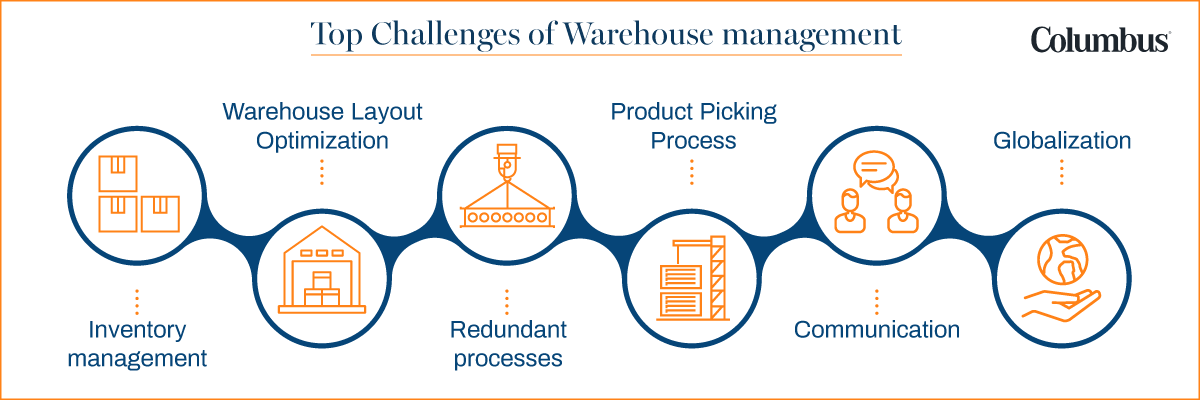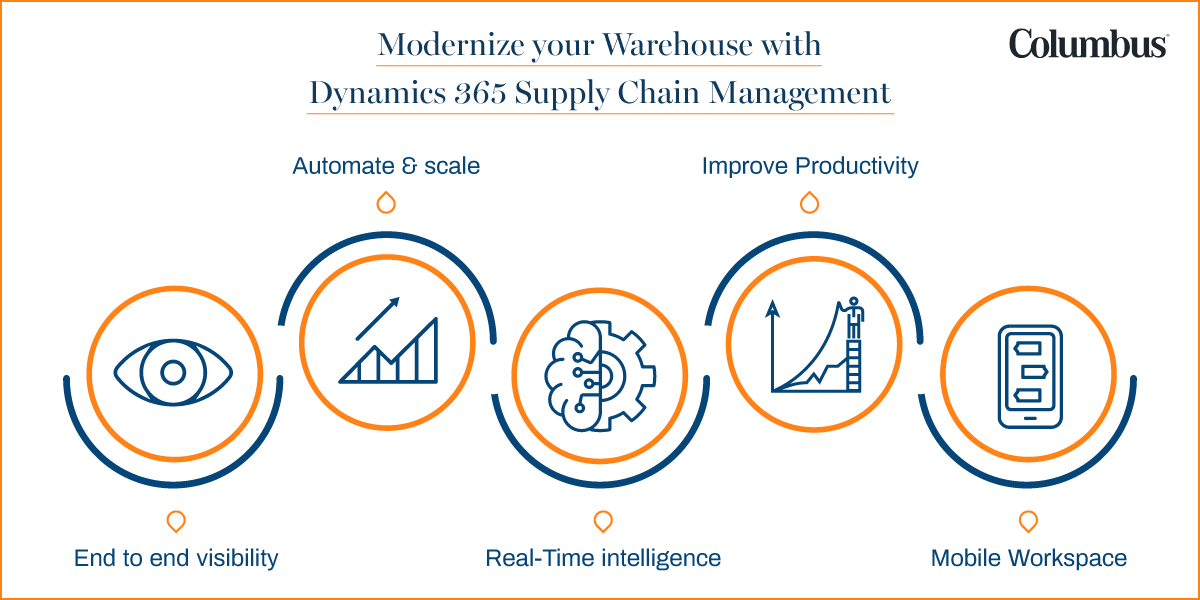Struggling to optimize your warehouse management operations? Though managing end-to-end manufacturing operations in itself is an uphill task, warehouse management is especially challenging because it involves dealing with the transfer, storage, and management of physical resources.
With the manufacturing industry making way for industry 4.0, which encourages companies to adopt new-age technologies like Artificial Intelligence, Internet of Things, Mixed Reality, Robotics, and Advanced Analytics, warehouse management also has been seeing new technological breakthroughs. Implementing smart and modern ERP systems such as Microsoft Dynamics 365 Supply Chain Management can help you optimize your supply chain and other inventory operations.
However, not all enterprises can financially and technologically afford to match the standards of the industry 4.0. Also, with organizations going global— establishing warehouses and working from different parts of the world—the intensity of the inventory management issues has only increased. In such cases, identifying the critical areas of improvement in your warehouse functions and streamlining them with the help of technology can have a substantial impact on the productivity and efficiency of your warehouse management department.
Here are the top 7 warehouse management challenges. Is your organization facing any of these?
The first step to modernize your inventory processes would be to identify the key challenging areas. Here are the primary warehouse challenges that most manufacturing companies face:

1. Maintaining accuracy in the inventory processes
Handling physical inventory poses various hurdles and can result in errors. Given the intricate web of operations that warehouse management entails, even a single mistake in one process can start a domino effect of errors impacting multiple inventory and other functions. Inconsistencies in inventory management can result in inventory shortage and unfulfilled orders, which would, in turn, lead to unsatisfied customers and a decrease in profitability in the long term.
2. Implementing transparent overview of inventory location
Without a unified overview of the inventory operations across the warehouses, it would be difficult for your enterprise to plan, allocate, and utilize your resources optimally. Inadequate visibility to the warehouse locations can delay picking and order fulfilments, which can result in increased time and costs.
3. Optimizing the warehouse layout to reduce picking time
Space utilization of the warehouses does not depend on the size of the warehouses, but it highly relies on the layout of your inventory. For instance, to make your picking process efficient and quick, you can store the high-selling and fast-moving stock on the front shelves of your warehouse. This makes it easy for the lift trucks to pick up the items for the delivery. In the absence of such best practices, your labor time and effort would go up incredibly, causing a decline in productivity.
4. Eliminating redundant processes to improve productivity
Without the right technology and gadgets, managing inventory processes can be error-prone, tedious, and redundant. On-going and recurring activities like printing pick tickets, item counting, and handling picking lists can be streamlined and automated with barcode technology backed by a robust application like Dynamics 365 Supply chain management. With an efficient ERP, you can minimize the time consumed, and save money and time.
5. Enabling efficiency of the picking process to minimize effort
If your warehouses still do picking processes manually, you would understand the pain of time-consuming picking operations that originate from having a standard route to pick items for shipment. Automating the routing system using smart ERP software can optimize the picking process by decreasing the wear and tear of the equipment and reducing the strain on the workforce.
6. Establishing transparent and consistent communication channels
As warehouse management involves multiple intrinsic processes, it can get challenging to enable effective communication in the processes. Inadequate or lack of communication can cause productivity issues in the process flow. An efficient channel for clear communication can help you streamline your picking and shipments accurately without any delays. Also, it enables you to make strategic decisions that are consistent across the supply chain operations.
7. Managing complex supply chain processes in a globalized world
Globalization has infused rapid competition in the world. It has interconnected countries across the globe, making high-quality products available at cheaper prices. With competitors across the world, it is only more difficult for companies to deliver products at affordable prices. The right technology can help you decrease your production costs and, in turn, reduces the prices of your finished products.
Overcoming Warehouse Challenges with Microsoft dynamics 365 supply chain management
If not fixed in time, the warehouse challenges can impact the entire operations of your manufacturing company. Addressing the above-mentioned critical issues can only be efficiently done by the introduction of technology. Leverage Microsoft Dynamics 365 Supply Chain Management— a robust ERP system—to help you build resilient processes to empower your warehouse operations with agility and connectivity.
On the surface level, D365 supply chain management can help you eliminate error-prone processes, minimize manual efforts, reduce processing time, improve accuracy, enhance productivity, and streamline end-to-end warehouse processes. If you explore more sophisticated features of Microsoft Dynamics 365 ERP, you can maximize the benefits you can reap from the applications and optimize your supply chain processes.
With Dynamics 365 SCM, you can revolutionize your warehouse management in the following ways:

1. Ensure end-to-end visibility
D365 SCM enables a 360-degree overview of your entire warehouse system. With greater visibility of your supply chain, you can streamline workflows and manage the movement of goods through the production process.
2. Improve accuracy and scalability
With Dynamics Supply Chain Management, automate and optimize critical warehouse functions to minimize errors. Configure the built-in machine learning application to guide you right from managing the raw materials to delivering the finished goods
3. Leverage real-time intelligence
Get a complete overview of the warehouse processes with interactive reports from Microsoft Power BI. Identify trends and make informed decisions to maintain the health and optimum functionality of the warehouse
4. Enhance productivity with mobile workspace
Increase the productivity and manage your warehouse anytime, anywhere from the Dynamics 365 mobile device. Simplify routine tasks by tailoring the mobile workspaces according to the warehouse and employee needs.
The benefits provided by Microsoft Dynamics 365 supply chain management to optimize the manufacturing processes are comprehensive and numerous. With an efficient ERP like Dynamics 365 Supply Chain Management, you can transform your warehouse operations to accelerate results.
Isn’t D365 supply chain management fantastic? However, if you are serious about optimizing your warehouses, Microsoft dynamics 365 SCM offers more specific benefits that align with and improve your warehouse management strategy. Watch out for our next assets, which takes a deep dive into the ERP to help you better understand how to manage your warehouse efficiently.
